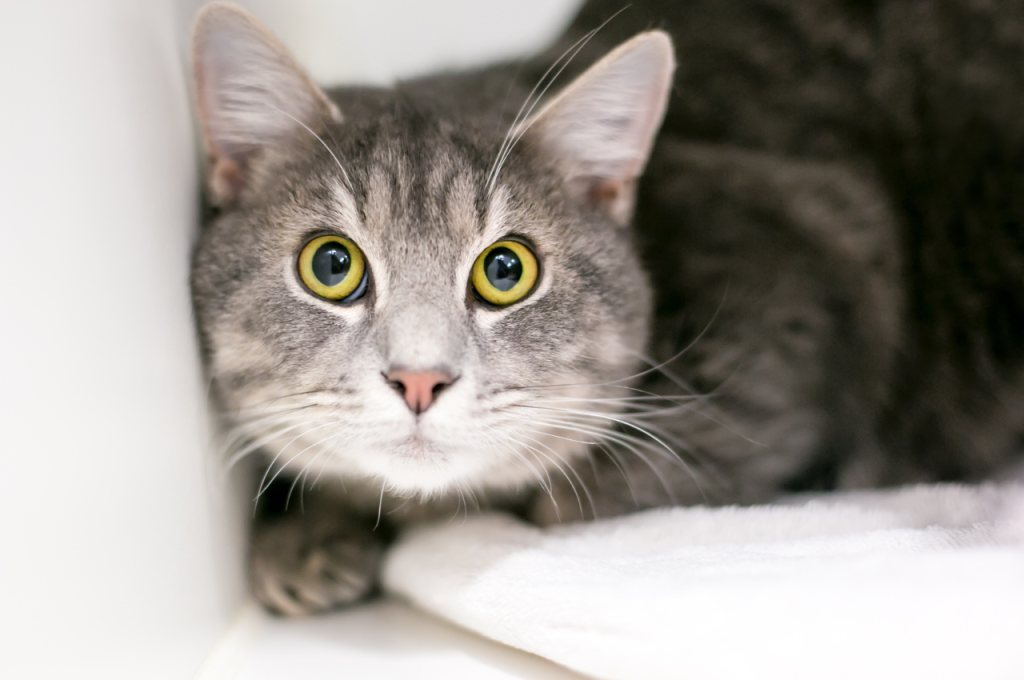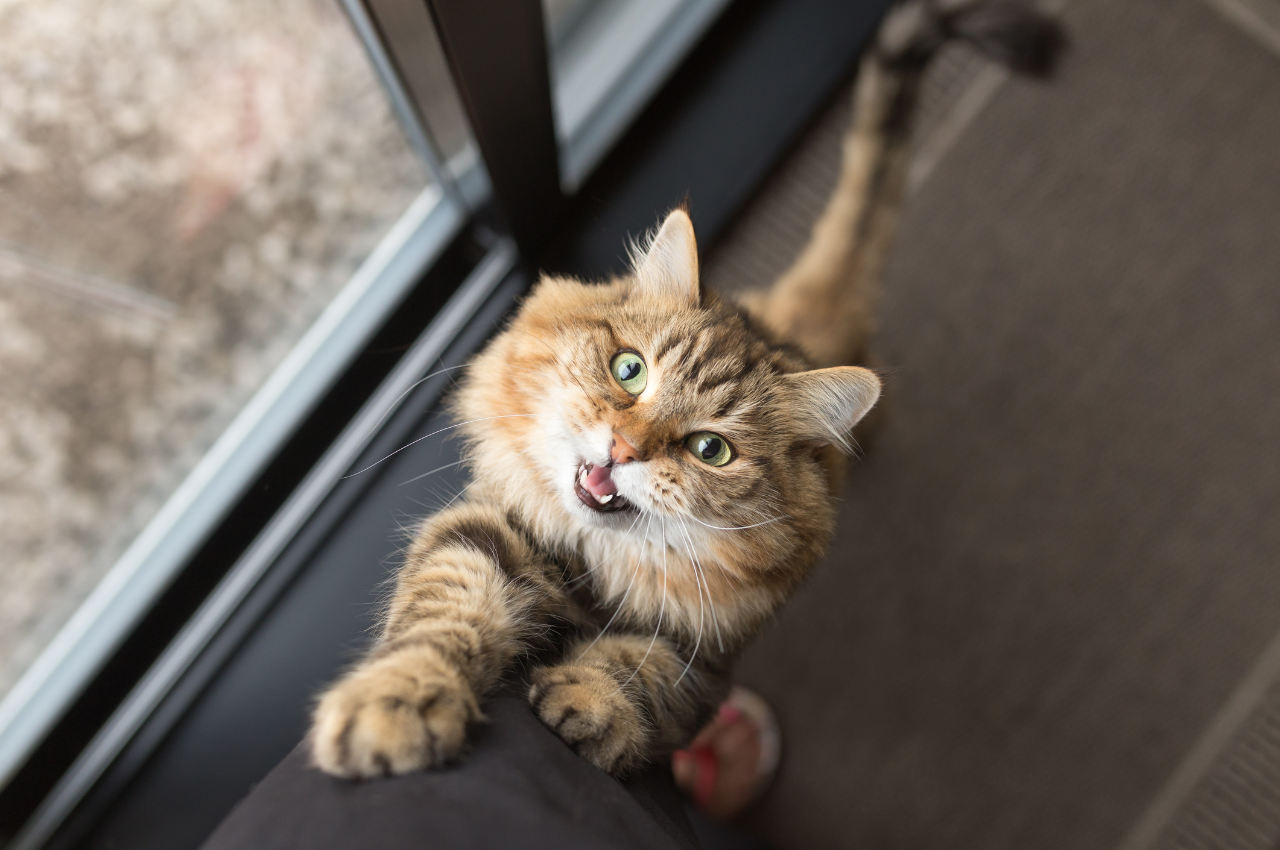Cat anxiety treatment involves creating a safe environment, providing mental stimulation, and using calming pheromones. By addressing triggers and implementing behavioral techniques, cats can overcome anxiety and live happier lives.
Cats, like humans, can experience anxiety due to various factors such as changes in routine, loud noises, or new environments. Recognizing signs of anxiety in cats is crucial for early intervention and treatment. Anxiety in cats can manifest in behaviors like hiding, excessive grooming, or aggression.
It’s essential to consult with a veterinarian to rule out any underlying medical conditions before starting a treatment plan. Implementing strategies to reduce stress, such as creating safe spaces, maintaining a consistent routine, and offering interactive toys, can help alleviate anxiety in cats. Additionally, products like calming collars or diffusers containing pheromones can provide comfort and relaxation for anxious felines.
Identifying Cat Anxiety
Recognizing signs of cat anxiety is crucial for effective treatment. Understanding your cat’s behavior changes can lead to tailored anxiety management strategies. Communication, environment adjustments, and calming aids can help alleviate feline anxiety.

As a cat owner, it’s important to understand that cats can experience anxiety just like humans. Identifying cat anxiety is the first step toward providing the necessary treatment.
Signs And Symptoms
Some common signs and symptoms of cat anxiety include excessive grooming, hiding, aggression, loss of appetite, and urinating outside the litter box. If you notice any of these behaviors in your cat, it’s important to address them promptly.
Common Triggers
There are several common triggers that can cause anxiety in cats. These include changes in routine, loud noises, separation from their owner, and the introduction of new pets or people in the household. By identifying these triggers, you can take steps to reduce their impact and help your cat feel more comfortable. If you suspect that your cat is experiencing anxiety, it’s important to seek the advice of a veterinarian. They can help you determine the underlying cause of your cat’s anxiety and recommend an appropriate treatment plan. With the right care and attention, you can help your cat overcome their anxiety and live a happy, healthy life.
The Science Behind Feline Anxiety
Cats, like humans, can experience anxiety. Understanding the science behind feline anxiety can help in identifying the causes and finding appropriate treatment. Whether it’s biological factors or environmental influences, feline anxiety can have a significant impact on a cat’s well-being. In this section, we will delve into the science behind feline anxiety, exploring the biological and environmental aspects that contribute to this condition.
Biological Factors
Biological factors play a crucial role in feline anxiety. Genetics can predispose some cats to be more prone to anxiety, affecting their neurochemical balance. This imbalance can lead to heightened stress responses and anxious behaviors. Additionally, medical conditions such as hyperthyroidism or chronic pain can contribute to feline anxiety.
Environmental Influences
Environmental influences also significantly impact feline anxiety. Changes in the cat’s environment, such as relocation, introduction of new pets, or even alterations in the household routine, can trigger anxiety. Lack of stimulation or safe spaces within the environment can also contribute to feline anxiety.
Professional Diagnosis
Professional diagnosis is crucial when dealing with cat anxiety. A vet can accurately assess the symptoms and provide appropriate treatment. It’s important to understand when it’s time to seek professional help and what to expect during a veterinary consultation.
When To See A Vet
If your cat displays persistent signs of anxiety such as excessive grooming, hiding, or aggression, it’s time to seek veterinary advice. Additionally, if there are sudden changes in behavior or unexplained physical symptoms, consulting a vet is necessary.
What To Expect
During the veterinary consultation, the vet will conduct a thorough examination to rule out any underlying medical conditions that could be causing or exacerbating the anxiety. This may include blood tests, urinalysis, and other diagnostic procedures. The vet will also inquire about the cat’s environment, routine, and any recent changes that may have triggered anxiety.
Behavioral Therapies
Cat anxiety can be a distressing condition for both feline companions and their owners. Fortunately, there are effective behavioral therapies that can help alleviate anxiety in cats. These therapies focus on addressing the root causes of anxiety and modifying the cat’s behavior through positive reinforcement and desensitization techniques. Let’s explore these two approaches in more detail.

Positive Reinforcement
Positive reinforcement is a powerful tool in modifying a cat’s behavior and reducing anxiety. By rewarding desired behaviors, we can encourage cats to engage in positive actions and feel more confident in their environment. This technique involves using treats, praise, or play as rewards for behaviors that are calm, relaxed, or brave.
To implement positive reinforcement, start by identifying the triggers that cause anxiety in your cat. It could be loud noises, unfamiliar visitors, or certain situations. Then, create a calm and positive environment for your cat by offering treats or engaging in interactive play during these triggering events. This will help your cat associate the previously anxiety-inducing situation with positive experiences, gradually reducing their anxiety over time.
Desensitization Techniques
Desensitization techniques involve exposing cats to their anxiety triggers in a controlled and gradual manner. The goal is to help them develop a tolerance to these triggers and reduce their fear response. This technique is particularly useful for cats with specific phobias or fears, such as loud noises or car rides.
To desensitize your cat, start by introducing the trigger at a low intensity or from a safe distance. For example, if your cat is scared of loud noises, play a recording of the noise at a very low volume. Gradually increase the intensity or proximity of the trigger over time, always ensuring that your cat remains calm and comfortable. Pairing this exposure with positive reinforcement, such as treats or play, can further enhance the effectiveness of desensitization.
It’s important to remember that each cat is unique, and what works for one may not work for another. Patience, consistency, and understanding are key when implementing these behavioral therapies. Additionally, consulting with a veterinarian or a professional animal behaviorist can provide valuable guidance tailored to your cat’s specific needs.
By utilizing positive reinforcement and desensitization techniques, you can help your anxious cat overcome their fears and lead a happier, more relaxed life. With time and dedication, these behavioral therapies can make a significant difference in your cat’s overall well-being.
Environmental Modifications
Cats can experience anxiety due to various environmental factors. Making modifications to your cat’s environment can help alleviate their stress and create a sense of safety and comfort. Environmental modifications play a crucial role in managing cat anxiety and promoting their overall well-being.
Creating A Safe Space
Designating a specific area in your home as a safe space for your cat can provide them with a secure retreat when they feel overwhelmed. This area should be quiet, calm, and equipped with their favorite toys, bedding, and scratching posts. Placing this safe space in a quiet and secluded location can help your cat feel more secure and in control of their surroundings.
The Role Of Play And Exercise
Engaging in regular play and exercise can help reduce your cat’s anxiety and provide a healthy outlet for their energy. Interactive toys, such as feather wands and puzzle feeders, can stimulate their mental and physical well-being. Providing opportunities for play and exercise can prevent boredom and decrease stress levels in your cat.
Medical Treatments
Cat anxiety can be effectively treated with various medical treatments. From prescription medications to natural remedies, there are options to help alleviate your feline companion’s stress and anxiety. Consulting with a veterinarian can provide insight into the best course of treatment for your cat’s specific needs.
Prescription Medications
In severe cases, prescription medications can help alleviate cat anxiety. Prescription medications are usually prescribed by a veterinarian. These medications may include anti-anxiety drugs like alprazolam.
Natural Supplements
Natural supplements can be a gentler option to manage cat anxiety. Natural supplements like chamomile or L-theanine can help calm cats. Consult a vet before giving natural supplements to your cat.
Alternative Remedies
Cat anxiety can be effectively managed with alternative remedies such as aromatherapy, acupuncture, and massage therapy.
Aromatherapy For Cats
Aromatherapy using cat-safe essential oils can help calm anxious felines in a natural way.
Acupuncture And Massage
Acupuncture and gentle massage techniques can reduce stress and promote relaxation in cats.
Long-term Management
Effective long-term management is key in treating cat anxiety. It involves careful monitoring and making necessary adjustments to the treatment plan. Preventing relapses is also crucial to ensure your cat’s continued well-being.

Monitoring And Adjustments
- Regularly assess your cat’s behavior and response to treatment.
- Consult with your veterinarian to make any needed adjustments.
- Consider behavioral therapy in addition to medication.
Preventing Relapses
- Continue with the treatment plan even if your cat shows improvement.
- Provide a safe and comfortable environment for your cat.
- Keep stressors to a minimum in your cat’s daily life.
Conclusion
Cat anxiety is a common issue that pet owners face. However, there are various treatment options available that can ease the symptoms and improve your cat’s quality of life. From environmental changes to medication and behavior modification, it’s important to work with your veterinarian to create a tailored treatment plan for your furry friend.
With patience and dedication, you can help your cat live a happier and healthier life.
